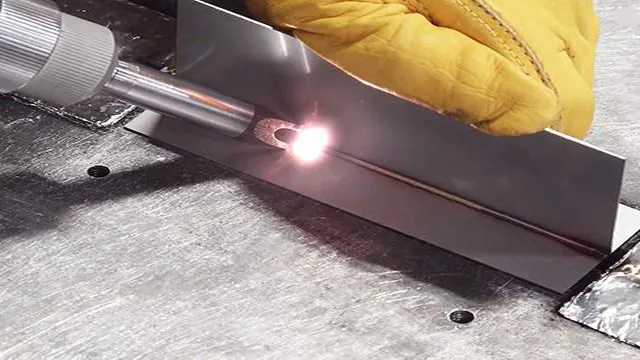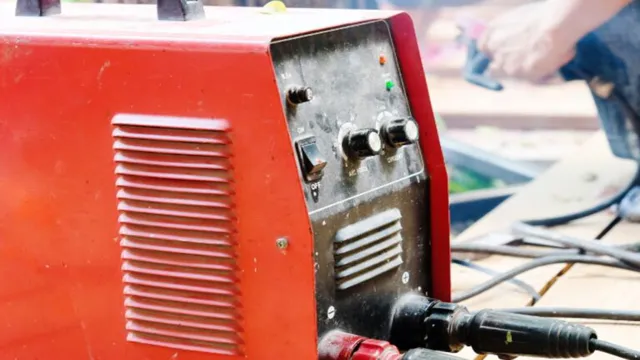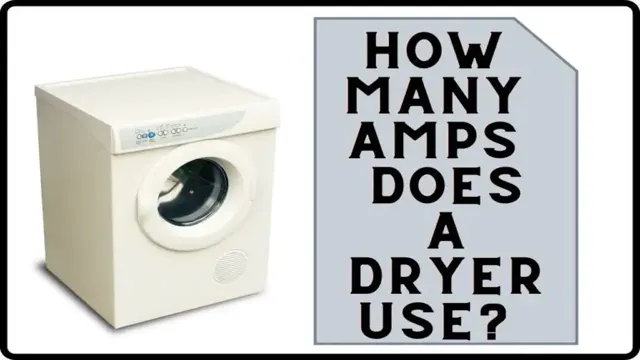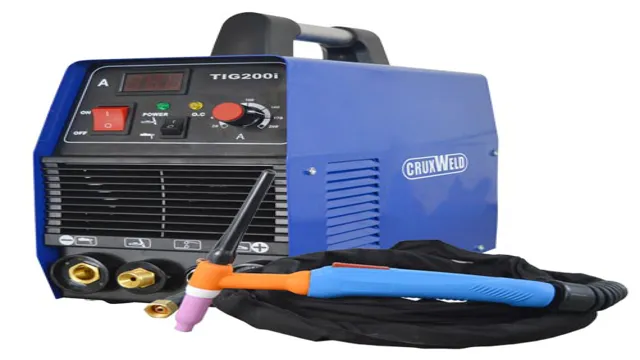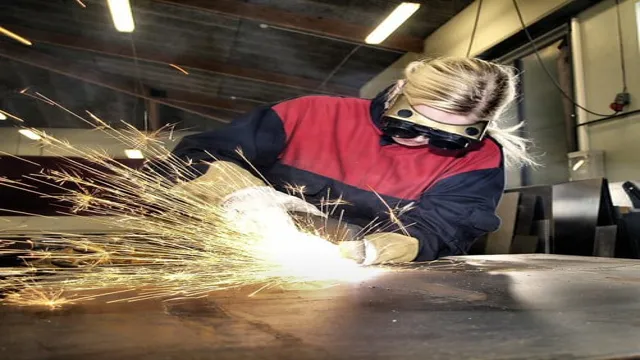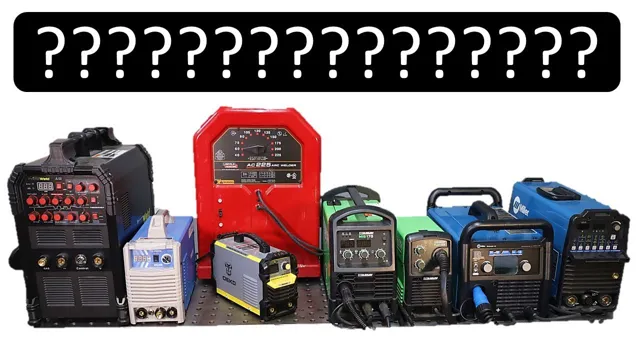How Hot Does a Welding Torch Get: Exploring the Temperature Range and Its Impact.
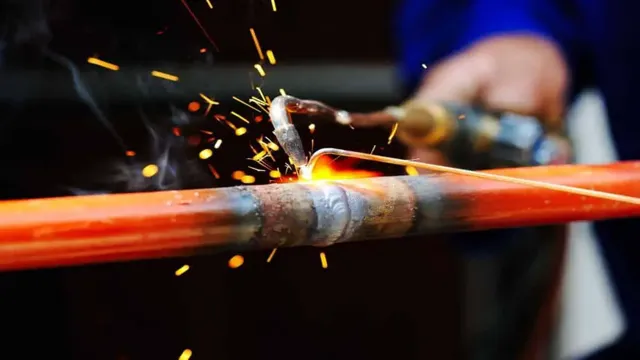
Welding torches are one of the most important tools used in the welding process. They produce an intense flame that can reach temperatures high enough to melt even the toughest metals. As a welder, understanding the heat produced by your torch is critical to achieving precise and effective welds.
But, how hot does a welding torch get? Is it hot enough to melt everything in its path? In this blog, we’ll explore the science behind welding torches and answer some of the most common questions regarding their temperature. So, grab your welding helmet, and let’s get to it!
Introduction
Have you ever wondered how hot a welding torch can get? Well, the answer is not straightforward. The temperature of a welding torch can vary depending on the type of fuel used and the amount of oxygen or air allowed into the flame. Generally, a welding torch can heat up to around 3,500°C (6320°F) or higher.
This extreme level of heat is more than enough to melt most metals and create strong bonds between them. In fact, welding is often used to fuse metals together in construction, manufacturing, and repair industries. However, it is important to use welding equipment properly and carefully, as the high temperatures can be dangerous and cause accidents if not handled with caution.
What is a welding torch?
A welding torch is a handheld tool used for welding two metal pieces together. It typically consists of a handle, a valve to control the flow of gas, and a nozzle where the flame or arc is generated. The torch can be powered by different sources, including oxygen and acetylene or an electric current.
Welding torches come in different types, each suited for a specific welding technique or material. For instance, TIG torches are better suited for thin metals and precise work, while MIG torches are ideal for thicker metals and continuous welding. To get the desired welding effect, a welder has to control the flame or arc’s temperature and intensity by adjusting the gas and current flow.
Overall, a welding torch is a versatile tool that allows welders to produce high-quality metal joints, whether for industrial or artistic projects.
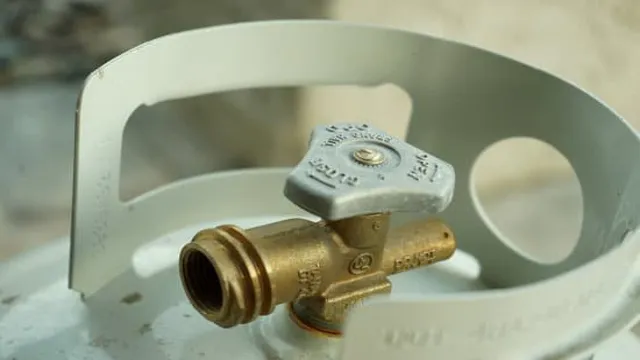
Why is temperature important in welding?
As far as welding is concerned, temperature plays a vital role in ensuring that the final product is of desired quality. In simple terms, welding involves joining two or more metal pieces by melting them and then allowing them to solidify. The temperature at which this process takes place matters a lot, as it can impact the physical and chemical properties of the weld joint.
Understanding the role of temperature in welding is, therefore, crucial for achieving strong and durable welds. In fact, temperature control can differentiate between a good and a poor weld. Therefore, welders need to be knowledgeable about the effects of temperature on different welding processes, and how to optimize temperature settings to ensure high-quality welds.
In summary, temperature is an essential parameter in welding, and welders must pay close attention to it to achieve optimal results.
Temperature Range of a Welding Torch
Have you ever wondered how hot a welding torch can get? Well, it all depends on the type of torch you’re using and the materials you’re working with. Generally, welding torches can reach temperatures of up to 6,000 degrees Fahrenheit or more, depending on the type of fuel being burned. For example, torches that run on acetylene gas can reach up to 6,300 degrees Fahrenheit, while propane-powered torches can go up to 3,600 degrees Fahrenheit.
These incredibly high temperatures are necessary when working with metals that have high melting points, as they ensure that the metal reaches the required temperature for welding. However, it’s essential to use caution and protective equipment when working with a welding torch, as they can cause serious burns if not handled correctly.
Different Types of Welding Torches and their Temperature Ranges
When it comes to welding torches, it’s important to know their temperature ranges to ensure proper usage and safety. Different welding torches have varying temperature ranges depending on the type of welding process they are designed for. For example, a MIG (metal inert gas) welding torch can reach a temperature range of 3,000 to 4,500 degrees Fahrenheit, while a TIG (tungsten inert gas) welding torch has a lower temperature range of 3,000 to 4,000 degrees Fahrenheit.
On the other hand, a plasma cutting torch can reach a temperature range of up to 30,000 degrees Fahrenheit, making it one of the hottest welding torches on the market. It’s essential to follow safety guidelines when using any welding torch and ensure that you are using the correct torch for your specific welding application.
Factors that Determine the Temperature of a Welding Torch
When it comes to welding torches, temperature range is an important factor to consider. The temperature of a welding torch is determined by several factors, including the type of welding process being used, the type of metal being welded, and the size of the welding torch. For example, TIG welding typically requires a higher temperature range than MIG welding.
Additionally, welding thicker metals may require a higher temperature range than welding thinner metals. The size of the welding torch can also play a role in temperature range, as larger torches can typically handle higher temperatures. Ultimately, it’s important to ensure that the welding torch is operating at the appropriate temperature range to ensure a high-quality weld.
So, whether you’re a professional welder or simply interested in DIY welding projects, understanding the factors that determine welding torch temperature can help you achieve success in your welding endeavors.
What Temperature is Ideal for Welding?
When it comes to welding, the ideal temperature range of a welding torch is essential to achieve the best results. Generally, the temperature range for welding varies depending on the type of metal being welded. For instance, non-ferrous metals like aluminum require higher temperatures than ferrous metals like steel.
A welding torch is usually set between 4,500 and 6,000 degrees Fahrenheit to create a strong bond between the metals. If the temperature is too low, the weld may not hold the metal together, and if it’s too high, it can lead to the melting of the metal. Moreover, the temperature range can also depend on the Welding process one is using as some welding techniques may require higher temperatures than others.
As a welder, it’s essential to know the proper temperature range for welding different types of metals and use the appropriate techniques. This way, you can achieve a high-quality weld and ensure the safety and durability of the finished product.
Safety Precautions when Welding
When it comes to welding, safety is key. One major safety precaution is understanding how hot a welding torch can get. Typically, a welding torch can reach temperatures anywhere from 5,000 to 10,000 degrees Fahrenheit.
That’s pretty hot! It’s important to wear heat-resistant clothing, gloves, and a welding mask to protect your skin and eyes from the intense heat and bright light produced by the torch. In addition, make sure you are working in a well-ventilated area to avoid inhaling any harmful fumes. Always be aware of your surroundings and keep flammable materials away from the welding area.
Observing these safety measures can prevent accidents and ensure a successful welding project.
Protective Gear for Welding
When it comes to welding, safety should always be your topmost priority. Welding exposes you to dangerous chemicals, intense heat, and high voltage, which can result in severe injuries or even death. To ensure your safety, you need to wear protective gear that can protect your body from the hazards of welding.
This includes a welding helmet, gloves, jacket, and boots. A welding helmet protects your face and eyes from welding sparks, while gloves protect your hands from heat and spatter. A welding jacket and boots protect your body and feet from fires, burns, and other hazardous materials.
It’s also essential to ensure that your work area is well-ventilated to minimize exposure to harmful fumes and gases. Overall, wearing proper protective gear and taking safety precautions can help prevent accidents and ensure a safe welding experience.
Fire Safety Measures when Using a Welding Torch
Welding torches are essential tools in various industries, but they can also be dangerous if proper safety measures are not taken. To prevent any accidents, it is crucial to follow safety precautions when using a welding torch. Firstly, always wear protective clothing, including gloves, safety glasses, and a welding helmet with a shade lens.
Keep flammable materials away from the welding area and use fire-resistant curtains if necessary. Additionally, always check your equipment for any damages before starting the welding process. Ensure good ventilation to prevent the accumulation of harmful gases.
After completing the welding process, make sure to switch off the equipment and keep it in a safe place. By following these safety measures, you can minimize the risk of fire or accidents and ensure a safe and efficient welding experience.
Conclusion
In summary, a welding torch can get hotter than a spicy jalapeño on a summer day in the southwestern desert. But unlike that jalapeño, the heat generated by a welding torch is powerful enough to melt metal and join it together, creating impressive works of art and machinery. So next time you see a welding torch in action, remember that while it may not be the tastiest thing to add to your guacamole, it sure can do some incredible things with metal.
“
FAQs
What is the average temperature range of a welding torch?
The average temperature range of a welding torch can vary between 3,000 to 6,000 degrees Fahrenheit.
Can a welding torch reach temperatures higher than 6,000 degrees Fahrenheit?
Yes, it is possible for some welding torches, such as oxyacetylene torches, to reach temperatures higher than 6,000 degrees Fahrenheit.
How does the fuel source affect the temperature of a welding torch?
The fuel source can greatly affect the temperature of a welding torch. For instance, a propane torch may not reach as high temperatures as a acetylene torch.
What factors can affect the temperature of a welding torch flame?
Factors such as the type of fuel being used, the size of the tip, and the amount of pressure being applied can all affect the temperature of a welding torch flame.
Can the temperature of a welding torch be controlled?
Yes, the temperature of a welding torch can be controlled by adjusting the amount of fuel being supplied, the pressure being applied, or by changing the size of the tip.
What safety precautions should be taken when using a welding torch?
Safety precautions such as wearing protective clothing, using proper ventilation, and ensuring the area is free of flammable materials should be taken when using a welding torch.
Is it possible to damage the welding torch by overheating it?
Yes, overheating a welding torch can cause damage to the tip, the fuel line, or even the entire torch. It is important to ensure the torch is not overheated during use.

